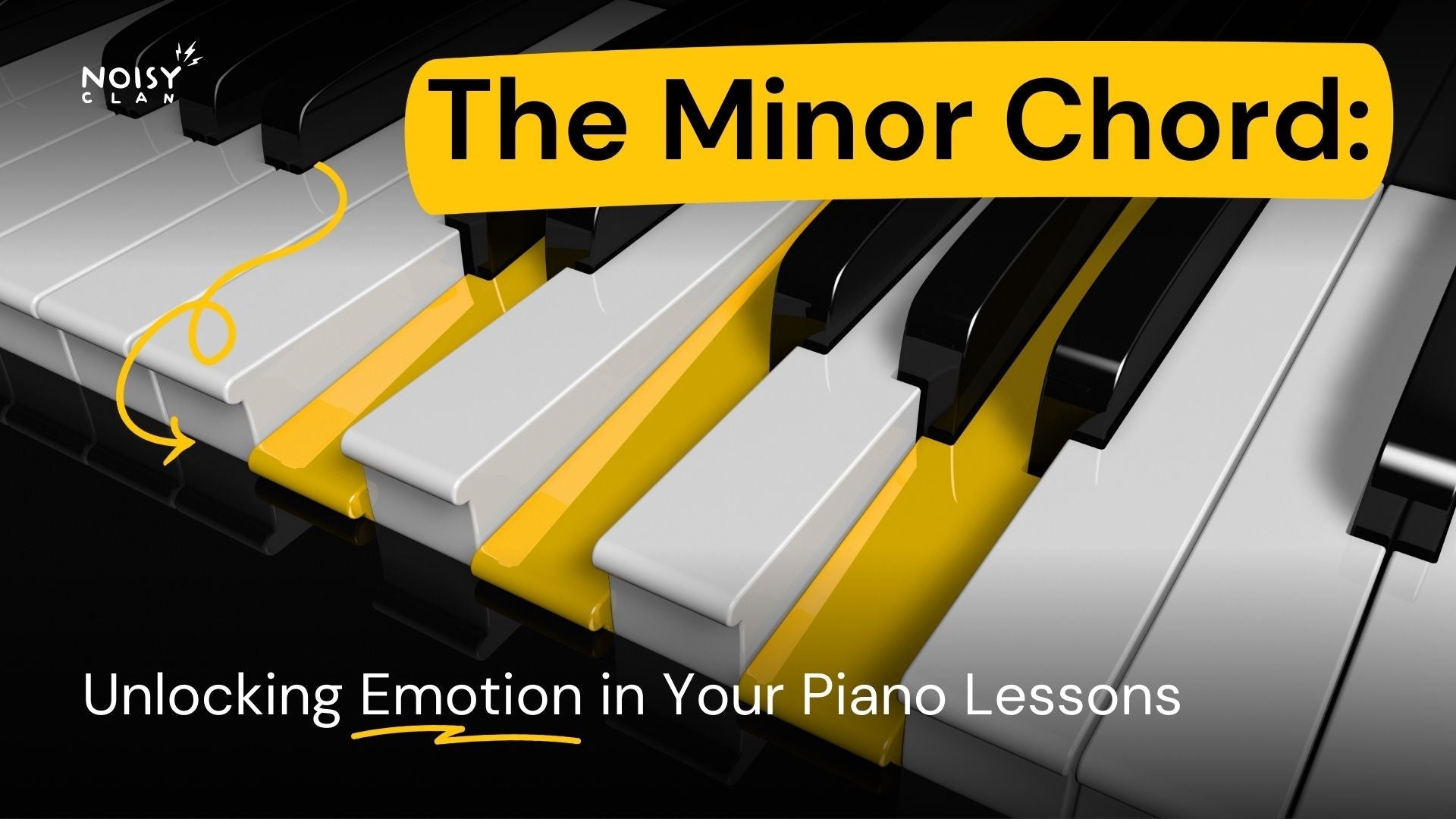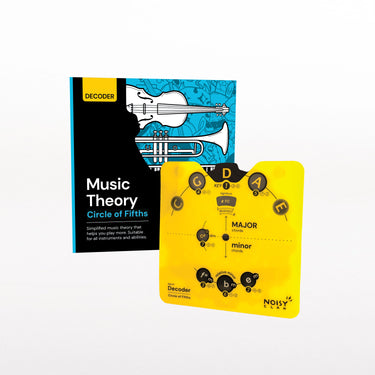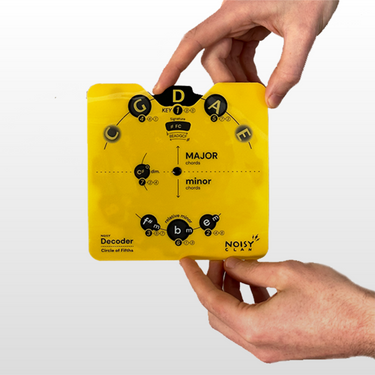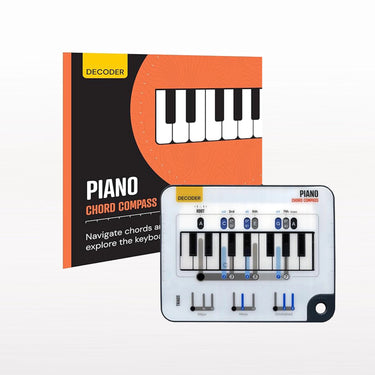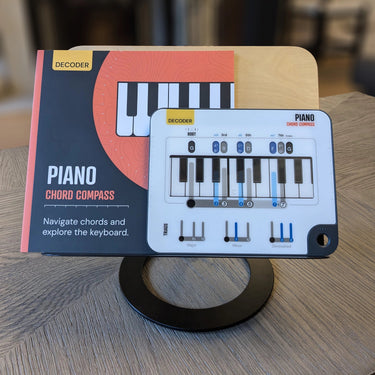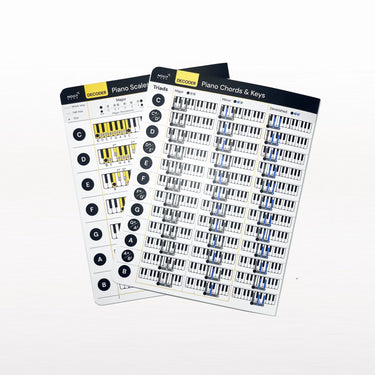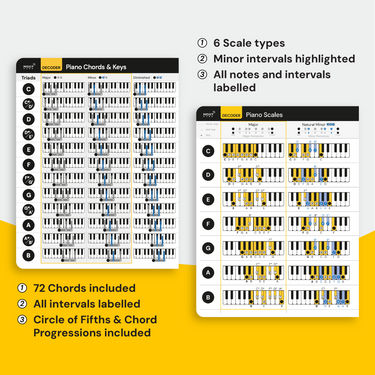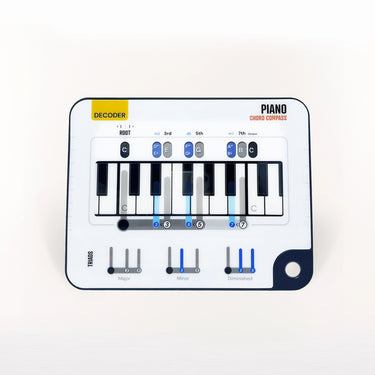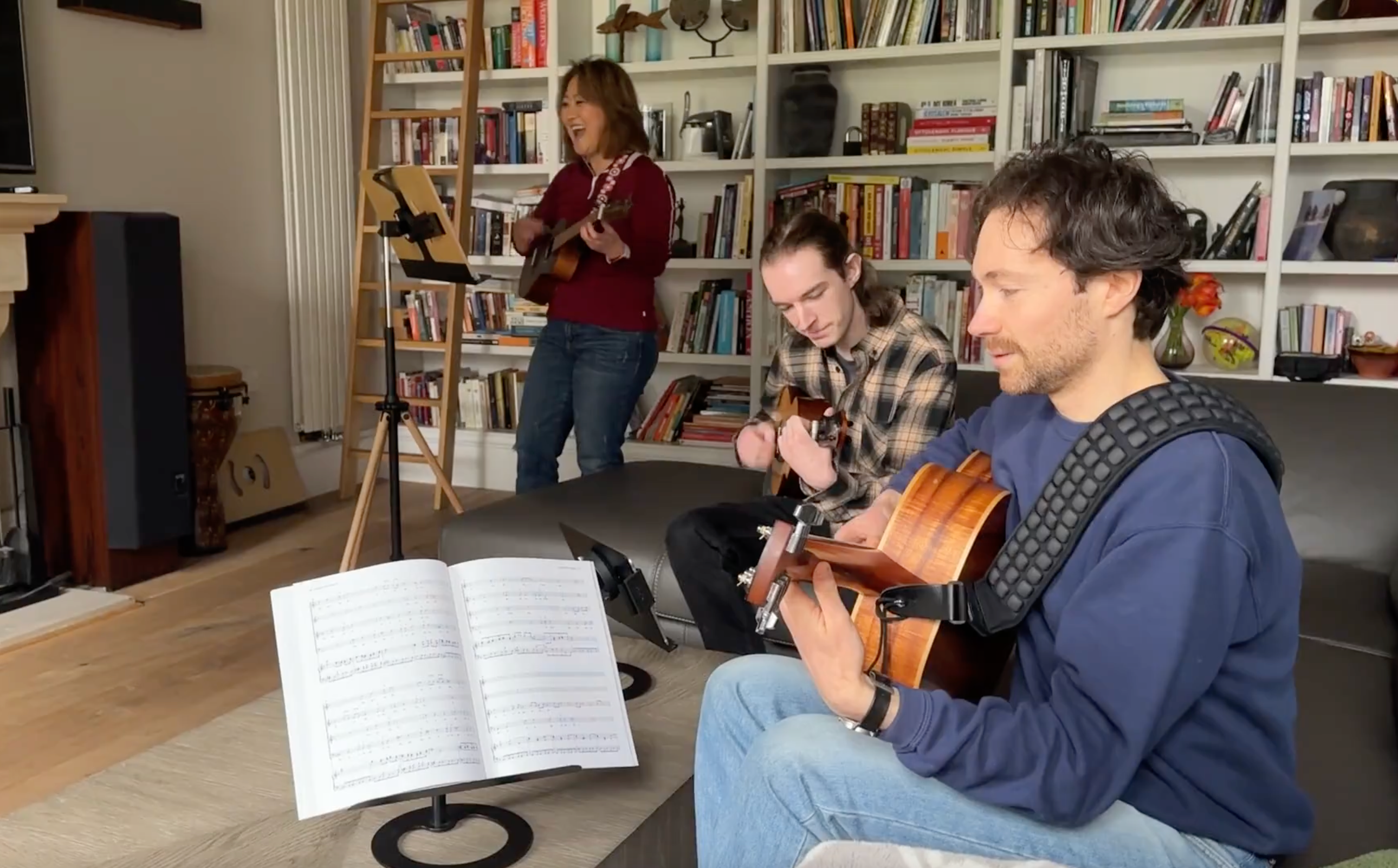
When you begin your piano lessons, you quickly realise that chords are the backbone of music. Among all the chords, minor chords hold a special place in the emotional spectrum of music. If major chords are like sunlight, minor chords are moonlight—subtle, introspective, and filled with bittersweet beauty.
In this blog, we’re diving deep into minor chords. By the end of this article, you’ll know how to build them, understand their role in music, and even tackle exercises designed for both beginners and advanced players. We’ll also discuss how tools like Noisy Clan’s Chord Compass can make learning these chords easier than ever.
Ready to unlock the emotional power of minor chords? Let’s get started!
What Is a Minor Chord?
At its core, a minor chord is made up of three notes:
-
The root note (the note the chord is named after).
-
The minor third, which is three semitones above the root.
-
The perfect fifth, which is seven semitones above the root.
For example, the A Minor chord consists of:
-
A (the root),
-
C (the minor third), and
-
E (the perfect fifth).
What makes a minor chord different from a major chord? It’s all about the third. In a major chord, the third is a major third (four semitones above the root), while in a minor chord, it’s lowered by one semitone. This small change creates a dramatic emotional shift.
Think of it like this: If a major chord is a joyful celebration, a minor chord is a reflective moment of introspection.
How to Build a Minor Chord
Building a minor chord is simple when you follow this step-by-step guide:
-
Choose your root note. For instance, D.
-
Count three semitones up from the root to find the minor third (F).
-
Count seven semitones up from the root to find the perfect fifth (A).
Now you have a D Minor chord: D - F - A.
If you’re just starting to learn piano, try playing some basic minor chords, like:
-
A Minor (Am): A - C - E
-
D Minor (Dm): D - F - A
-
E Minor (Em): E - G - B
These chords are easy to play and are found in countless songs.
Famous Songs That Use Minor Chords
Minor chords are everywhere in music, from ballads to rock anthems. Here are some famous examples:
-
"Someone Like You" by Adele: This heart-wrenching ballad relies heavily on minor chords to convey its emotional weight. Try playing A Minor and D Minor to capture the mood.
-
"Stairway to Heaven" by Led Zeppelin: The intro features a haunting A Minor chord that sets the tone for the entire song.
-
"Boulevard of Broken Dreams" by Green Day: The melancholy vibe comes from the use of F Minor and other minor chords in the progression.
-
"No Woman, No Cry" by Bob Marley: The reggae classic leans on A Minor to create a soothing yet reflective feel.
Beginner Exercises: Getting Comfortable with Minor Chords
If you’re new to piano, start with these simple exercises:
-
Play Each Chord Individually: Focus on the basics. Play A Minor, D Minor, and E Minor slowly, ensuring each note is clear.
-
Switch Between Major and Minor: Play a C Major chord (C - E - G), then switch to C Minor (C - Eb - G). Notice the emotional shift.
Advanced Exercises: Taking It to the Next Level
For those who are ready for a challenge, try these:
1. Inversions
Rearrange the notes of a minor chord to create inversions:
-
First inversion: Play C Minor as Eb - G - C.
-
Second inversion: Play C Minor as G - C - Eb.
Inversions are perfect for creating smooth transitions between chords in your playing.
2. Add Extensions
Enhance your minor chords by adding extra notes:
-
Am7: A - C - E - G.
-
Dm9: D - F - A - C - E.
Extensions add depth and colour to your music, making your playing more dynamic.
3. Create a Minor Progression
Combine minor chords with major ones for emotional progressions. For example:
-
Am - G - F - Em: A classic progression found in countless pop songs.
-
Dm - C - Bb - F: Perfect for creating a melancholic vibe.
-
Now, try this: G - Em - C - D7
How Noisy Clan’s Chord Compass Helps You Master Minor Chords
-
Need to build a D Minor chord? The Chord Compass highlights the 1st (D), 3rd (F), and 5th (A) notes.
-
Want to explore the D Minor scale? It shows you: D - E - F - G - A - Bb - C - D.
By using the Chord Compass, you’ll speed up your learning process and build confidence as you progress.
Joke Break: Let’s Keep It Fun!
Why did the piano bring a ladder to practice?
Because it wanted to reach new scales!
Okay, back to minor chords…
Experimenting with Minor Chords: Your Creative Playground
One of the best ways to learn piano is through experimentation. Here are some ideas to spark your creativity:
-
Combine Scales and Chords: Play a C Minor scale while holding a Cm chord. Notice how the melody interacts with the harmony.
-
Try Modal Interchange: Borrow minor chords from related keys to add unexpected twists to your music.
And if, at this point, you cannot live without chords, read more about them here!
Sign Up and Start Playing
Ready to dive deeper into the world of minor chords? At Noisy Clan, we’re here to make your learning journey as smooth as possible. Sign up with your email to access exclusive downloads and take your piano lessons to the next level.
Start creating music that moves people — one minor chord at a time! 🎹




